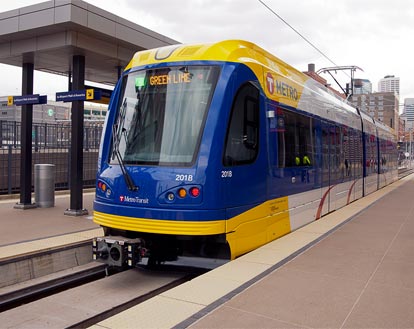A University of Minnesota light rail reportedly causes electromagnetic radiation and vibrations, which could disturb university research in chemistry and medical departments, the Minnesota Daily reported.
For more than a year, Metro Transit and the Metropolitan Council have attempted to reduce the electromagnetic disturbances from the Green Line Light Rail. The University of Minnesota attempted to set limits on the amount of electromagnetic interference the trains could emit in 2010; however, the Green Line has exceeded the limit every year, according to the Daily.
“Though the light rail interference has not affected nearby research labs, over time, increasing emissions could affect lab equipment. Current researchers are not seeing any noticeable impact. It is making sure that we will continue to have a system that works and won’t continue to degrade,” Leslie Krueger, university services chief of staff, said.
Many departments at the university have relocated expensive research equipment to the Mayo Memorial Building, where there is a smaller chance of damage from the vibrations.
“Nuclear magnetic resonance research equipment is the most vulnerable to deterioration, specifically in Kolthoff Hall and the 717 Delaware building, where the University keeps some of its most expensive equipment,” Krueger said.
Metro Transit noted they have already discovered the source of the issue – the interference comes from electrical boxes laid in the railroad tracks.
“These rail access boxes fill with water and debris, causing an electrical imbalance that creates electrical build-up. The build-up then prompts the electromagnetic disturbance, Brian Funk, Metro Transit Light Rail operations director, said.
“The most likely solution would be to insert an inflatable balloon into the boxes that would prevent water and debris from getting stuck in the box. The balloon could be deflated anytime the boxes require inspection,” Funk added.
Earlier this month, The Board of Regents decided to allow the Metro Transit and the Metropolitan Council one more year to fix the problem and gave them until September 1, 2015 to produce a detailed plan of action, according to Minnesota Daily. The Met Council will also be required to test levels of interference four times a year instead of two times a year. In the meantime, the Green Line Light Rail will continue to operate.
